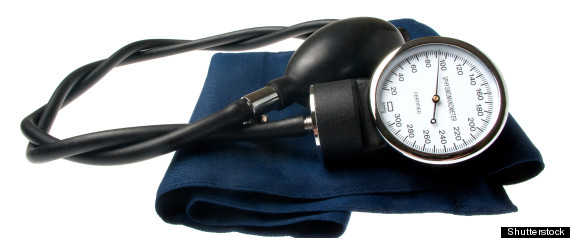
CHICAGO — New research suggests giving patients easier-to-take medicine and no-copay medical visits can help drive down high blood pressure, a major contributor to poor health and untimely deaths nationwide.
Those efforts were part of a big health care provider's eight-year program, involving more than 300,000 patients with high blood pressure. At the beginning, less than half had brought their blood pressure under control. That increased to a remarkable 80 percent, well above the national average, the researchers said.
The research involved Kaiser Permanente in Northern California, a network of 21 hospitals and 73 doctors' offices, which makes coordinating treatment easier than in independent physicians' offices.
The number of heart attacks and strokes among Northern California members fell substantially during roughly the same time as the 2001-09 study. Dr. Marc Jaffe, the lead author and leader of a Kaiser heart disease risk reduction program, said it's impossible to know if the blood pressure program can be credited for those declines, but he thinks it at least contributed.
Reductions continued even after the study ended; in 2011, 87 percent of roughly 350,000 Kaiser patients had recommended blood pressure levels.
The study was published Tuesday in the Journal of the American Medical Association.
"What's unique about this is the sheer scale of what they've done," said Dr. Goutham Rao, a family medicine specialist at NorthShore University HealthSystem, a group of four hospitals in Chicago's northern suburbs. Rao is involved in research on reducing obesity and other risks for heart disease.
"If we were able to keep everyone's blood pressure under control in the United States, the number of new strokes and heart attacks would go down just exponentially," he said.
High blood pressure affects 1 in 3 U.S. adults, or 67 million people, and the condition caused or contributed to more than 348,000 deaths in 2009, according to the Centers for Disease Control and Prevention.
Normal blood pressure is considered a reading of less than 120 over 80; high blood pressure is 140 over 90 or higher. High blood pressure typically causes no symptoms, at least initially, and can sometimes be managed with a healthy lifestyle, including physical activity plus avoiding salty foods, heavy drinking and excess weight. But two or more prescription drugs are often needed to bring high blood pressure under control.
In 2001, the Kaiser group introduced a system-wide program involving its 1,800 primary care doctors to tackle the problem. It created a registry of adult members with high blood pressure, based on medical records.
At the start, about 44 percent of 235,000 registry patients had their blood pressure under control. The registry grew and by 2009, the portion under control reached 80 percent of 353,000 patients. That compares to 64 percent of people with blood pressure problems nationwide.
Two features likely played a big role in the program's success: In 2005, the region started using a single generic pill combining two common blood pressure drugs, lisinopril and a diuretic. The pill is less expensive than taking the two medicines separately, and easier to use.
And in 2007, the program began offering free follow-up visits with medical assistants, rather than doctors, checking blood pressure readings. Besides charging no insurance copayment, these brief visits were available at more flexible times, increasing chances that patients would stick with the program.
"Patients really liked it because it was shorter, more convenient and more affordable," Jaffe said. He did not provide information on patients' costs or overall program costs and said that wasn't part of the study.
Donna Arnett, president of the American Heart Association, said "it's well documented that compliance to medication increases" when it's simpler to take. She said the results suggest that other large medical systems could adopt similar programs and achieve similar success.
___
Online:
JAMA: http://www.jama.com[1]
American Heart Association: http://www.heart.org[2]
___
Follow AP Medical Writer Lindsey Tanner at http://www.twiitter.com/LindseyTanner[3]
Also on HuffPost:
References
- ^ http://www.jama.com (www.jama.com)
- ^ http://www.heart.org (www.heart.org)
- ^ http://www.twiitter.com/LindseyTanner (www.twiitter.com)
- ^ Send us a tip (www.huffingtonpost.com)
- ^ Send us a photo or video (www.huffingtonpost.com)
- ^ Suggest a correction (www.huffingtonpost.com)

0 comments:
Post a Comment